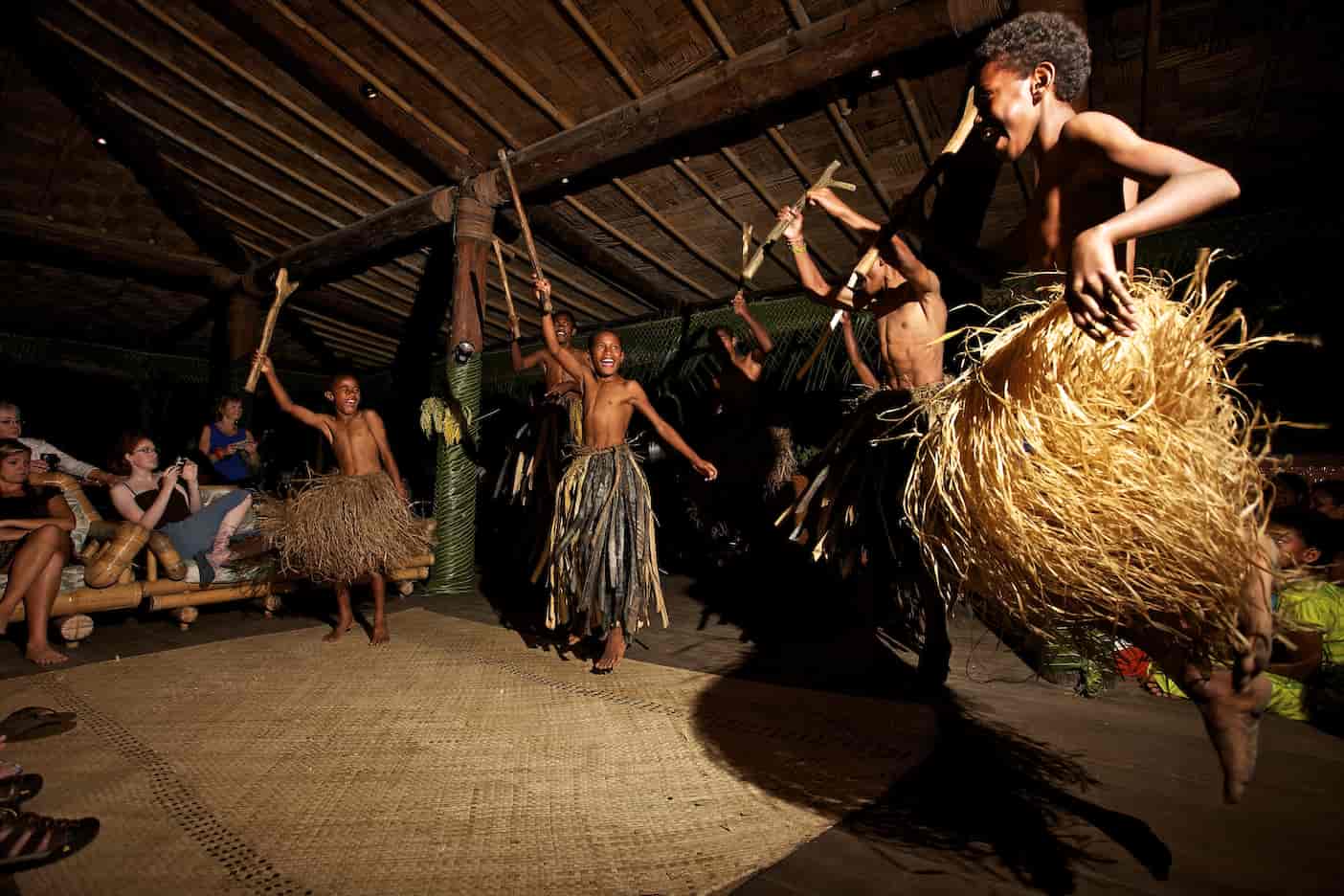
In this long-awaited blog, we’ll go over what is this beverage, what it does and why the heck is such an old beverage suddenly trending. By the time you’re through, you’ll be definitely putting drinking kava as a bucket-list item on your next South Pacific holiday.
Over the centuries, the term ‘kava’ has come to denote both the name of the plant and the drink that’s made from it. Interestingly, the South Pacific countries have little to no origin, incidence or mention of alcohol over the last millennia, but kava has permeated through almost all of them. Some have left consumption over time, some picked it up; some places have kept it as a casual tipple while others have raised it to holy, almost magical levels.
So, what is kava? It’s a pepper plant and it grows profusely across all of Oceania. But to find the magic, we’ve to dig a little deeper. Very literally, as it’s the roots of the pepper plant that is important. Basically, they are dug up, washed, dried, shredded and mixed in water. Then the cloudy, muddy decoction at the bottom is strained and bottom’s up! And that’s it, end of story.
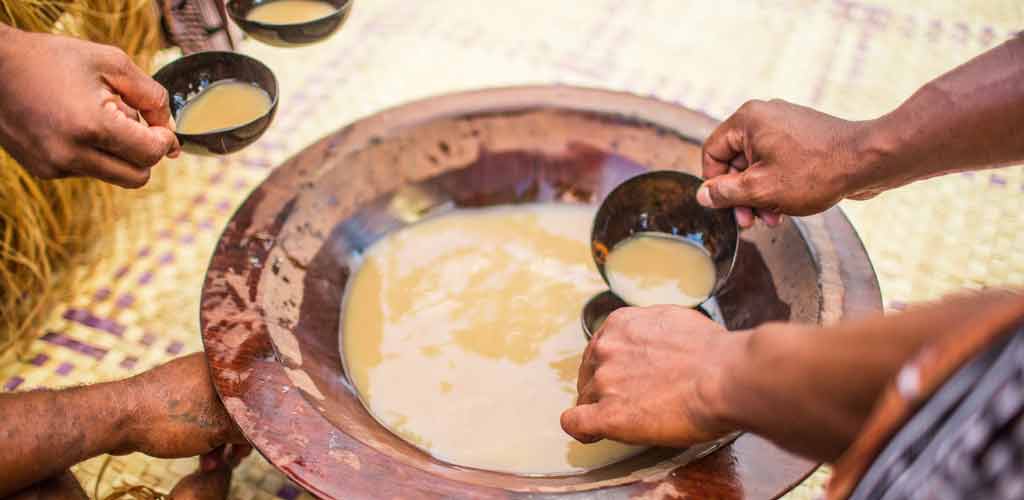
But wait! That doesn’t explain why a plant is so revered and treasured; or why the process is done every evening in a ritualistic manner with much pomp and show; or why some cultures will not go ahead with anything important without a cup of kava being passed around first! Yes, that’s Fiji, among others.
Well, it’s because the liquid thus consumed has very curious… properties. Kava is a stimulant as well as a soporific. Come again? Firstly, it causes a minty tingle going down, slowly numbing the mouth. Then, there is a brief period of euphoria and talkativeness, followed by slowing down and drowsiness. Ta-daa! It’s somewhat like alcohol, but minus the ‘aggro-bro’ phase and more of the ‘mellow-bro’ feeling. Plus, there are no artificial chemical processes, additives or mixers needed. Over time, the above is why the kava plant and drink has survived palate changes – all you need is fresh uprooted plant, a bowl of water and a little work-out to get the chilled-out, mellow feeling.
It’s present in almost all countries and islands of the South Pacific, some more than others. There are strains, too; some give more mellow highs than others.
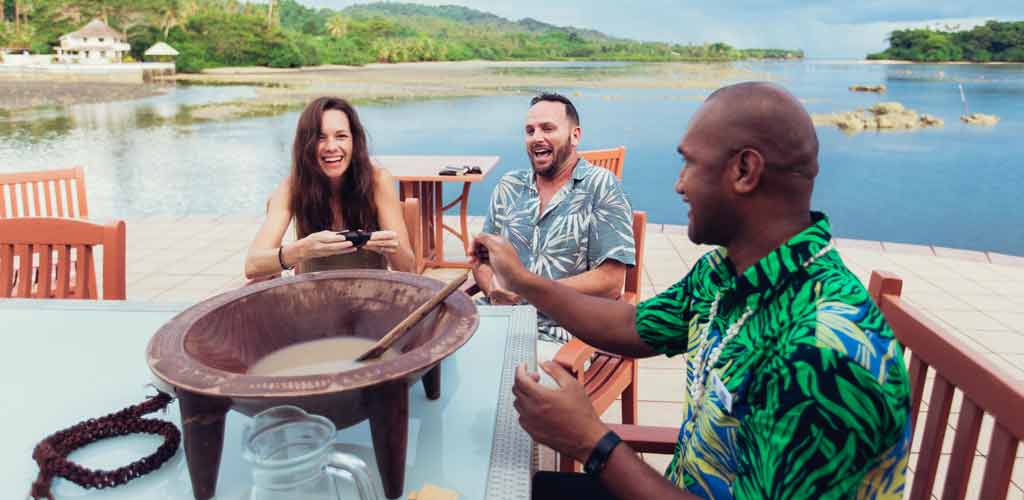
From archaeological and etymological records in history, the kava plant that is used and propagated today is entirely domesticated (Piper methysticum) – which means that it cannot flower and flourish normally. Only stem cuttings help it reproduce, which leads to the theory that current origin point of the modern kava plant – Melanesia, and to a point Vanuatu – may not be the true starting point at all. It could have started at higher latitudes like South East Asia and the Indian sub-continent, but these theories have yet to find concrete findings.
We reckon the experts fall off the wagon, start drinking kava before finishing research and we don’t blame them at all! It’s tough work and everybody needs to unwind.
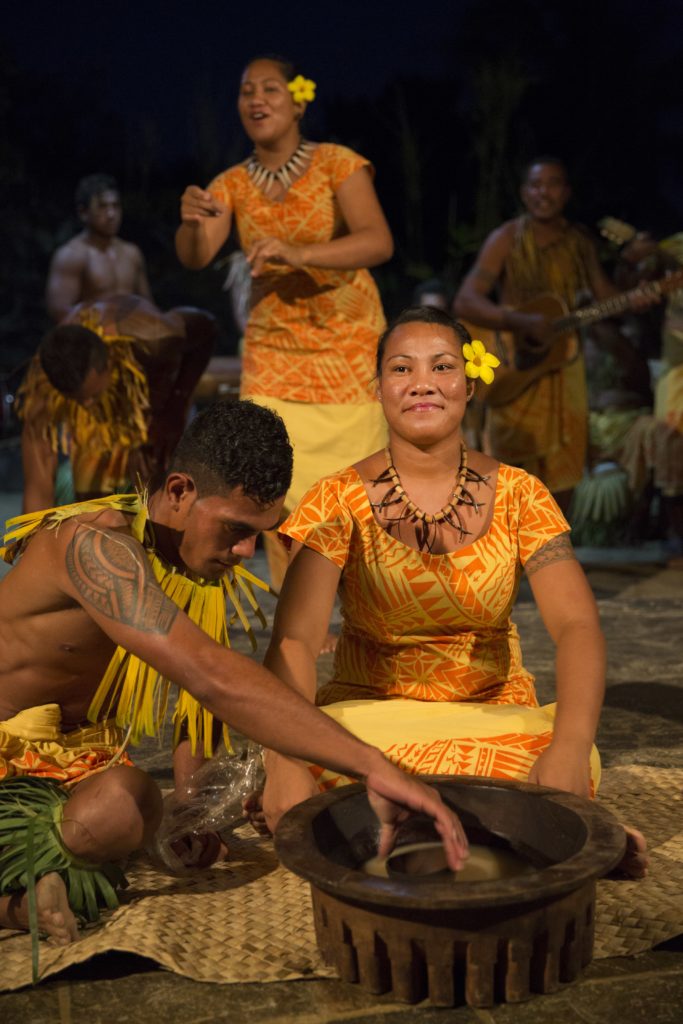
As a primarily Oceanic drink, it’s fascinating for widely travelled South Pacific travellers to draw lines around where this pepper plant has travelled. As we mentioned earlier, some places like Hawaii had widespread local regard for kava and use up till as late as 1901. Then the islands opened up to the world and Christian missionaries made it a point to denounce and demonise kava drinking practices. Over time, it flagged and died off entirely. Then, other places like Fiji were settled later (still millennia ago, mind you!), but the Melanesian settlers brought the pepper plant and lore along with it. Now, you’ll find a profusion of traditional drinking rituals as well as kava bars all over Fiji for travellers to sample.
There are legends and stories dime a dozen related with the kava plant. Ancient Vanuatu fables talk of a leprosy-afflicted Good Samaritan islander who received the benevolence of God as he died, turning his grave into the first ground to bear the kava pepper plant. Then, Solomon Islanders treat the plant and the drink with funeral respect. As in, it’s tradition to have a kava drinking session after the death of a loved one. Cook Islands had influence and permeance of kava at some point in time, but it’s very ephemeral now. On the other hand, Tahiti and Her Islands raised kava to impossible levels. Only the royals could sample it, anyone else found even slightly tottering under kava’s influence would lose their heads, very literally. That’s why even if the plant is found sporadically here and there, its use and mentions in history is not very prominent.
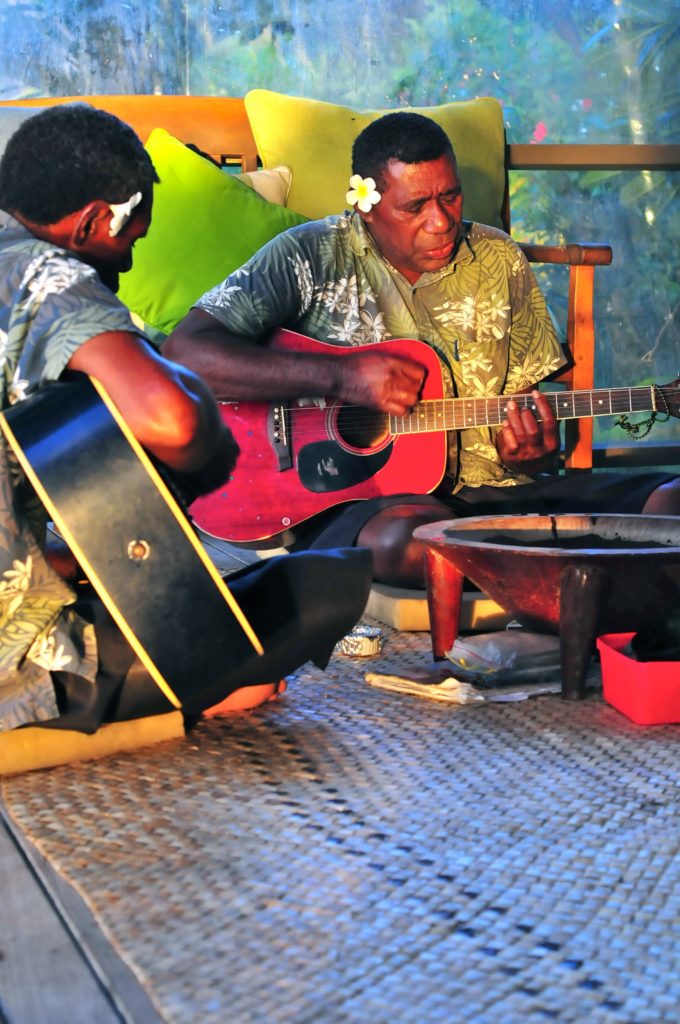
Fiji, Samoa and Tonga are the three island nations with the most complex histories, legends/stories and associations with kava. From association with the Fijian snake god Degei to Samoan tribal legends, here are where customs have filtered to include use by chiefs as well as commoners. This has not only kept the kava plant being cultivated, but its consumption seeing a surge post-independence to keep indigenous culture and tradition alive and kicking drinking.
For example, in Fijian custom, any traditionally important negotiation or meeting must be preceded by a couple cups of kava. Earlier, war chiefs would start peace negotiations with a few cups of kava ‘lubricating’ the process. To put in succinctly, we say ‘great thinking’!
We say yes. There are reams and reams of data and research to support both sides of the coin, but all negative side-effects are linked to overuse and use of chemically/industrially extracted kava. So does butter, but we advise to use both butter and kava judiciously (separately, not together!). Or sugar, alcohol, medicine or even … Netflix! We believe consuming anything everyday and in excess will harm and exacerbate weakness, even herb-based.
Naturally made kava is still as relaxing and stressbusting as ever. Just Google and find your happy median – sometimes, an open mind and a willingness to try something natural and new is all you need.
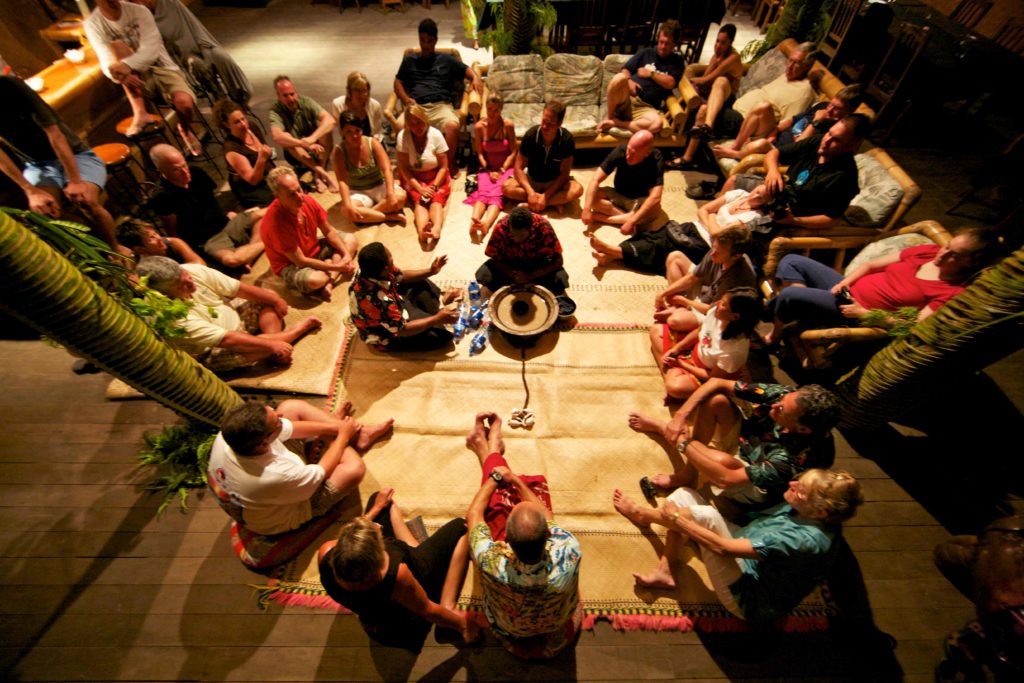
In Fiji, Samoa and Tonga – it’s not very difficult! Fijian mainland has widespread kava bars where one can just walk in and ask for a ‘bilo’ or cup of kava. As a rule, it’s usually offered as a gift (in Fiji, it’s called a sevusevu!) whenever visiting a village and meeting its chief for the first time. In fact, most traditional village visits organised in these countries will have a kava-making and tasting session as a part of the experience. As the pictures are proof, kava-drinking ceremonies include a lot of story-telling, songs, performances and generally a good time.
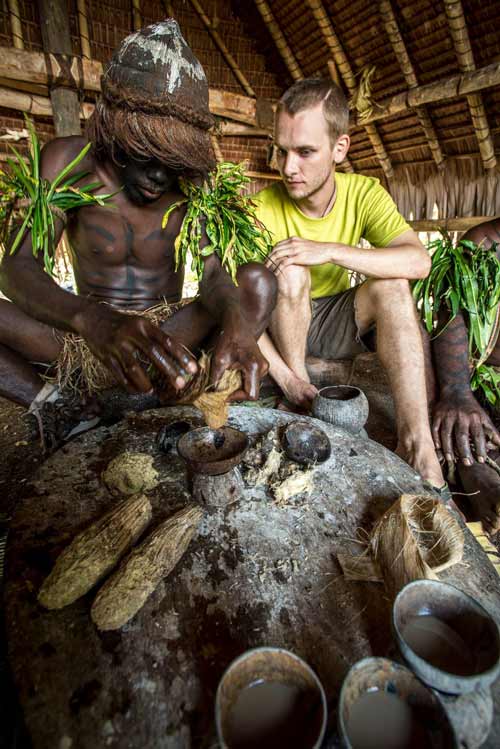
Like its history and dispersal, kava’s names have also gone through quite a number of linguistic calisthenics. For example, Tonga and Marquesas keep it simple as kava; or double down like ‘kavakava’! Moving further away, Hawaii and Samoa chop away the ‘k’ and call the plant just awa/ava. However, all names are not similar sounding; there are countries where the plant was introduced so long ago (and has been such an intrinsic part of their culture) that they have quite distinct names for it. So, it is known as yaqona (pronounced ya-ng-ona) in Fiji, malok/malogu in Vanuatu and in Pohnpei, the plant’s indigenous name is sakau!
But… ask and you shall receive the same earthy beverage, regardless of country and dialect!
Don’t worry, all the effects mentioned above are mild, very temporary and now a booming part of alt-alcobevs. The primo crop, however, is from Vanuatu. Called the ‘noble strain’, this variety of kava is what experts believe is the mothership, the ideal mix of strength, mellowness and other factors.
Worried about a ‘socially-intensive’ milieu in the times of COVID? Not to worry – our list of resorts are very aware and proactive when it comes to traveller safety (in fact, sensible, proactive travellers should bookmark this link of our – Blogs on COVID and Travel in South Pacific, because we highlight the resorts’ and hotels’ efforts in COVID safety and prevention). In the end, all a traveller needs to take away from the above is just, ‘New drink. Should try.’
Get exclusive access to discounts and deals - Enter your email address, subscribe to our mailing list and earn a $50 voucher to use against your first booking!